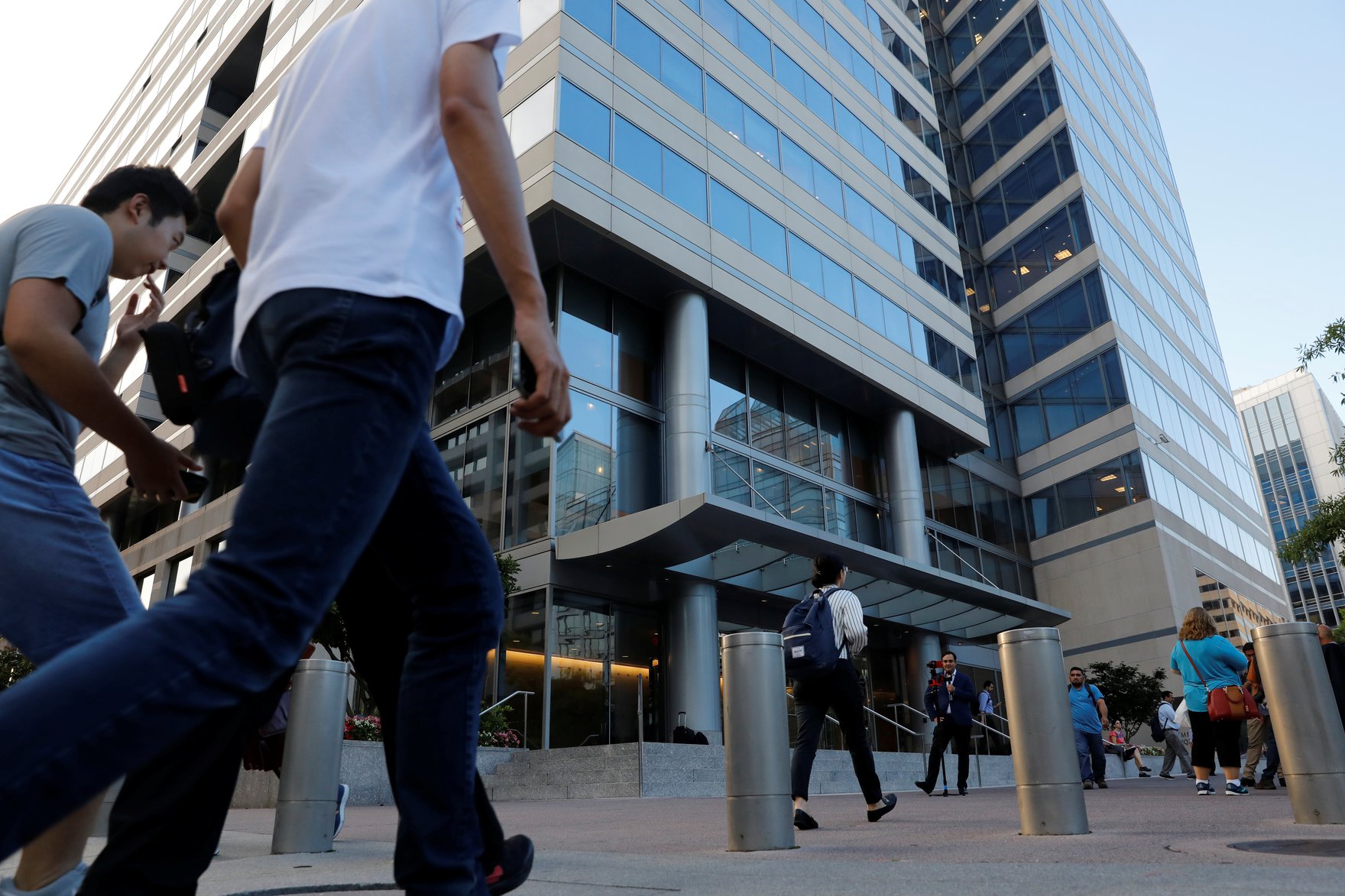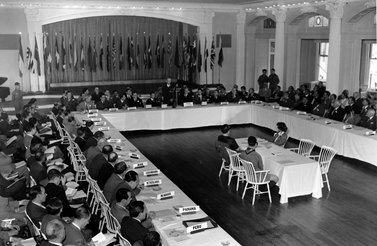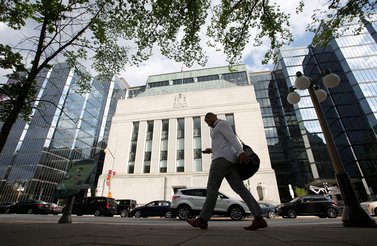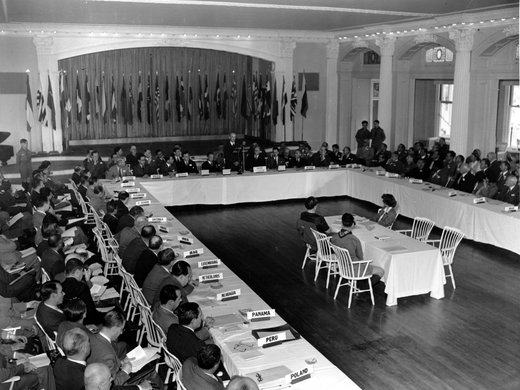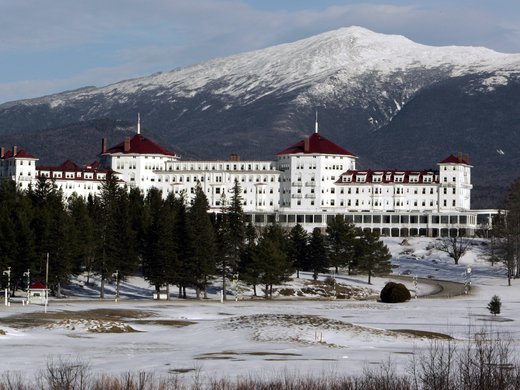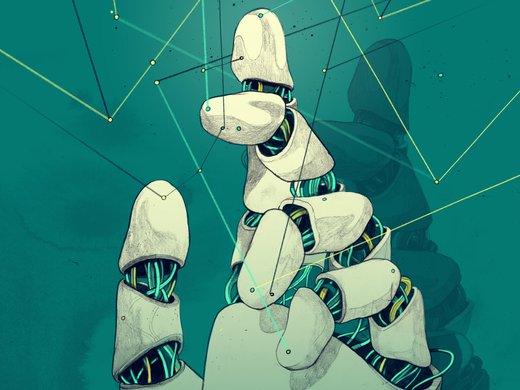Christine Lagarde, the first woman to lead the International Monetary Fund, will be remembered for pushing the institution out of its comfort zone. She directed staff to work on “softer” issues such as gender equality and climate change. Her agenda initially seemed frivolous to some critics, but now, a decade after her appointment in 2011, it looks prescient, as climate and inclusion are at the core of the global policy agenda.
Lagarde, who left the IMF to lead the European Central Bank in 2019, wanted to make the institution more innovative and less reliant on cutting-edge leaders to push it to embrace new ideas. So, in 2017, she created the Innovation Lab, or iLab. It received far less attention than her politically sensitive stands on gender and the environment, but in some ways, the iLab was just as provocative: Lagarde bet that a massive bureaucracy that carried around the weight of its history could nonetheless become more nimble.
The job of carrying out that experiment fell to Tristan Walker, a former start-up founder who had just finished setting up an innovation program at Saudi Arabia’s King Abdullah University of Science and Technology. Here’s an edited conversation with Walker on how his work is progressing.
How did you end up at the IMF’s iLab?
I’ve had an odd mix of entrepreneurial experiences in my career, including actually setting up a couple of companies with a high-school friend back in the early 2000s, which formed a lot of my early experiences of setting something up and leading something, and the ups and downs of that. That was just before, and then during, my M.B.A. It sparked an interest in creating things, setting things up and the kind of challenges related to that.
When this opportunity came up at the IMF, with Christine Lagarde saying she wants to create a new iLab and help foster a culture of innovation, I thought it sounded like an absolutely fascinating opportunity.
One thing is, of course, to have the opportunity to work with someone like Christine Lagarde in the first place; that was a big draw. The achievements of the IMF and its reputation were another big draw, as well as the diversity and talent of the staff. So, all of those really were a great draw.
This opportunity to create from scratch an innovation program in a large, historical international organization was just a once-in-a-lifetime opportunity.
So, you started some companies and then went back to school? I thought it was supposed to be the other way around?
It was sort of in parallel. I created a company with this high-school friend of mine, but I felt like I needed some more, let’s say, managerial business backing, or understanding, and networks, so I applied for an M.B.A. and then ran the company in parallel. Then, actually, we set up a separate company afterwards as well. Both were e-commerce related, which at the time was the hot thing of course. The M.B.A. sparked a lot of other interests, a more institutional view of innovation and transformation of organizations.
The narrative about the great innovative companies of this age is that they are founded and run by university dropouts and those who shun the system. You didn’t do that. You went back into the system. Can you talk to me a bit about that?
I’m not sure I’ve ever fully believed that narrative. Maybe if you look at some of the very high-profile or controversial leaders, the Elon Musks.
Take the Fund, for example. It’s packed full of people with economics Ph.D.s, but that certainly doesn’t preclude them from still being highly innovative and willing to try new things. But it felt very much like — and I guess this was probably what Lagarde had picked up on — that there was a lot of untapped potential. If you give people the right chance, the right opportunities, the right sense of empowerment, the right messaging, [they] are keen, even in a relatively conservative organization like the Fund.
You touched on this, but I’d like you to expand on it. What was the problem that the iLab was set up to fix? What did the former managing director identify as an issue, and how have you gone about trying to address that issue?
It was a common criticism: Why didn’t the large institutions that were meant to predict things like the global financial crisis, why didn’t anybody, really spot it or see it coming? This is not the only reason to set up a culture of innovation, but I think [Lagarde] had this view that there was a great danger of institutions like the Fund having what she called “corridor thinking,” basically, self-reaffirming views of what’s happening or what should happen. There is a danger there that you don’t spot outliers or new ways of thinking about things
That was at the organizational level. She wanted to build a bit more agility, responsiveness, a kind of awareness of contrary views, into the way the Fund operates. At the employee level, there was, and there still is, a sense of lack of empowerment. I’m sure this is true of many large organizations, but it was certainly true of the Fund at the time. People would say that it was difficult to challenge the status quo, or even if you did raise an idea, it may not be taken up, or it may be hard to get support to work on it; just a general sense that it was difficult to try new things.
The iLab was a way of supporting staff, being a focal point, and a clear message from management at the time that “we do think this is a good idea and we would like to support more innovation.” This was a very concrete way, visible way, of saying, “Yeah, we have an innovation lab and we welcome ideas. We’d like to support you with this.” Internally, that was very much the goal, or is the goal. The broader goal was making [the IMF] more agile and responsive.
Talk me through how you’ve gone about doing that.
The beginning of my journey was certainly to spend a lot of time on what I call a discovery period. It sounds obvious, but it made all the difference.
Basically, from my start date and us having a fully developed and signed-off strategy [the discovery] was almost a year-long period. You could have put a strategy in place in weeks, probably. But I think there were some important lessons from doing it this way.
First is that it was a highly, highly consultative approach in developing the strategy. We needed to get input from a wide range of staff. We did this through focus groups and through surveys and sessions in the iLab itself on thinking about the key barriers to innovation.
By the end, people felt they’d been listened to, which is one of the first things about empowerment. We put in place many of the ideas that staff suggested. People felt like they had some skin in the game. It started off as a very informal network of staff that basically were interested in innovation, which, over time, has become a stronger network of staff that we rely on all the time for giving us input and ideas. That’s been an ongoing element of putting this innovation strategy in place, that sense of ownership, open consultation, a sense of belonging.
Then, we put in place a variety of things that we call “enablers,” ways of empowering staff, overcoming some of the hurdles to innovation.
We’ve done a variety of different types of staff training. The most impactful one has been working with our [human relations] function to incorporate [innovation] into our leadership programs for staff. About one-quarter of the leadership program now is all about how to use innovation methodologies in your leadership at the Fund.
Another one we put in place is what we call our accelerator program. This is actually a structured, funded program to support project teams who have ideas for improving the way the Fund does its work. We help them take it from a good idea to a working prototype or a paper or tool or whatever. It’s the equivalent of a start-up angel fund or a seed fund. [Getting] that first idea to working product or service is in some ways the hardest piece. The accelerator program does exactly that. We provide training. We provide mentoring. It’s a sort of high-profile program internally. We bring in external expertise if needed, and crucially, we also provide funding, seed funding, toward these ideas. But also time. Because it’s high-profile, many of the staff members involved in them use that as justification to work on it in their day job, as well as [working] their day job.
What didn’t work? Did you try some things that just didn’t stick?
Something that we’ve been struggling with is, along the lines of what I believe Google has set up, an organization-wide policy, where staff can spend 20 percent of their time working on innovative or new ideas. We thought of trying that at the Fund as well.
There are difficulties in the actual use of it. COVID-19 has happened and people are now so busy on other things, but I think there’s something more fundamental. [There is] a kind of taboo related to organizations where, if you signal to your manager that you have 20 percent free time, it’s sort of saying, “I’m not all that busy.” You know what I’m saying?
So that’s an example of something that we’re trying to work out.
Are there tangible examples of your work that might have trickled out into the world outside the Fund?
It’s still early days, but there are some examples. Most of our innovation [work] so far has been very internally focused. This has been about developing tools, new ways of doing our own internal work to support the membership. But we are opening this up over time, evolving the IMF to become more of an open model, open innovation model, where we would draw on ideas from outside, but also then develop tools that could be used outside and inside.
In terms of some of the things that either the public may have heard of, or that may be useful to our membership: a team from the strategy policy review department, plus others across the Fund, upgraded what we call our vulnerability exercise. This is a regular exercise where the Fund works on key economic financial vulnerabilities that it may see on the horizon. They upgraded it significantly by using a variety of new techniques that we supported them with around machine learning, new sentiment, natural language processing. It’s a fascinating project, which is now a key element of how they run this exercise. So, you could say that, indirectly, that information is now being shared with our key stakeholders.
One quite fun example that made an article in the [the Financial Times] was around something that a group of staff at the World Bank and the Fund set up, called “Learning Coin,” where they created an internal, basically blockchain learning program where you learned about blockchain and fintech. You then also earned — there was no real monetary value — but you earned things called learning coins as a sort of incentive. So, it was learning about blockchain, [and] at the same time, earning these coins, which you could pass between people and so on. It was an entirely internal kind of prototype that has been shut down since, but it was a very, very interesting project and drew great interest from staff. We had some nice events around it.
There are lots of things that we do to improve the data forecasting and analysis, looking at shipping vessel data and how you’re using that to improve, let’s say, forecasting trade. There’s a variety of teams using SWIFT data, financial transaction data, to nowcast trade, but also balance of payments. And most recently, also, looking to see if we can use it to detect unusual financial transactions for anticorruption policy. These are tools that are being used internally, but we’ve had some of our member countries asking about these and whether they could apply them to things that they’re interested in.
The project that is most visible, but it’s still at the prototype stage, has been the Anti-corruption Challenge. Those are teams that are made up of some staff but mostly external partners. They’re working on prototypes to do with money laundering and public procurement and the public wage bills — tools that will be meant for use by member countries’ authorities. If they come to fruition — we hope they will, they look successful — [they] will be practical tools that the countries could use.
Could you talk a bit more about these challenges? It was interesting to see that the Fund has adopted challenges at a smaller scale to either prod the staff into doing a little bit more, or finding ways to get a little more out of staff than you might have otherwise.
It’s another one of our enabling activities. It’s a bit of a straddle, actually, between an enabling activity — in the sense that the crowdsourcing element is definitely enabling — but then we ended up with projects that go into our accelerator program. So it sort of straddles two of our key pillars.
The reason we do challenges? There are many reasons. One is, it’s a very visible way of supporting innovation within the Fund and it does focus people. Put it this way, often you may have an idea in the back of your mind, but until you’re prompted with a deadline, and some kind of process to evaluate it that puts some pressure on you, you may never get around to it. So, we do find that focal points, once or twice a year, where we actively collect ideas, it’s been a great way of getting more engagement. And actually, over time, staff engagement in those challenges has gone up tremendously.
The other is that it’s a positive signal. You know, if you’re talking about permission to innovate, if your management or leadership in your organization says, “We want to hear your ideas on X, Y, Z problem,” it’s definitely opening that door to say, “Okay, do challenge the status quo on this, this, this, and this.” Permission is granted, as it were. Some staff don’t need it. They’ll suggest ideas all day long. But for some, I think that makes a big difference.
There is also the question of relevance. This is a really important one. There is a danger that labs just become huge repositories of ideas that go nowhere. Topical challenges that are quite focused on problems that really matter to the institution or the membership, it does focus innovation on things that are important at the time.
Then, of course, it’s fun. It’s transparent. All the staff get to see all of the ideas. They can comment on it. They can vote on it. You end up with this internal portal that is very open. It’s very democratic. It’s inclusive. You can see what other colleagues are thinking about. People like the process, too, given the competitive nature of stuff at the Fund.
There is this incredible benefit of matchmaking, right? We find this all the time. People have similar ideas. When they see them, they’ll call each other and say, “Can I work with you on this?” Or, “I’d love to support this,” or whatever. We find teams coalescing around their ideas.
Given your experience, how nimble do you think an institution like the IMF can actually be?
Institutions can be extremely nimble when they need to be, with the right focus of the institution, which the Fund is actually very good at, like maintaining its focus on what matters most to its member countries in terms of our expertise, combined with a great motivation of staff to support the membership as widely as possible.
I’ve been pleasantly surprised how [with] Fund staff, despite all of the usual bureaucratic tendencies, there is an underlying capacity to innovate relatively quickly when people want to. But most importantly, there is definitely a sense of curiosity and wanting to improve time. So, if you have that diversity of staff and thinking and expertise, if you have the mission that drives people, and then just a little bit of support with the empowerment piece, I think it makes it possible.
One thing that I’m always wondering about is the importance of hierarchy. Very, very frequently people mention this as a downside to innovation: if it’s too hierarchical, then grassroots innovation can’t happen.
It’s interesting, I think, to look at this from a Fund perspective. I’m starting to believe it is possible to have a highly hierarchical organization with an innovation culture. And actually, maybe that’s the best combination, because then you have, let’s say, innovative thinking and practices in an institution that can move very quickly. This is what the Fund is very good at. So, if a decision needs to be made, you know, by tonight, we can do it because we have this very clear hierarchy and decision-making process.
So, a hierarchical organization can in fact be innovative as long as the chain of command is clear?
I was more trying to answer whether a big organization can be nimble. So, you need — in my mind, for the agility piece — nimbleness, responsiveness; you need both the mindset and the culture. You also probably would need the hierarchy, because, in theory, you could have, say, an academic institution [with] highly innovative, creative people and processes but not necessarily the hierarchy to make decisions.
Last question. What’s next for the iLab?
Well, certainly one thing is to evolve from purely internally focused to a more internal-and-external model.
The way that we worked on our Anti-corruption Challenge was that it wasn’t open to the private sector. For instance, it was open to, of course, our stakeholders, our member countries and authorities, and then relevant civil society. It’s not because they’re not interested in the private sector, but part of this is also about building long-term relationships with our member countries directly, with things that are a great use to them. So, I see that continuing. We’re in the middle of potentially launching an innovation challenge open to partners on climate and nature, the economics of climate in nature. It will be very interesting to see where that goes. It’s become a huge priority for the Fund and the world.
The other thing is, there are a huge amount of lessons learned from new ways of working during the [global outbreak of] COVID-19. I don’t just mean inside the Fund, although that’s also a big element of this, but it’s also what does this mean for the future of work, and how do we support our membership, and what does it mean for the economy? So, there’s this huge, rich vein there for innovation and new thinking. We’re already getting lots of staff thinking about this.
It’s probably out of necessity. What do we do when travel resumes? What do we do when people want to work remotely and in the office? But beyond that, rethinking how best we deliver our mandate and what does it mean for economies. Those are two of the big things that are on our minds.
